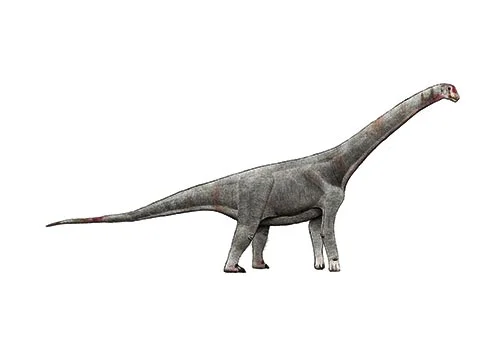Chubutisaurus (Chubut lizard)

Chu-but-e-sore-us
G. del Corro - 1975
Herbivore
Estimated 20 meters long
Sauropod
C. insignis (type)
Argentina, Chubut Province - Cerro Barcino Formation, Bayo Overo Member
Late Cretaceous, 80 million years ago
Chubutisaurus Facts
Chubutisaurus is a genus of herbivorous dinosaur that lived during the Late Cretaceous period, around 80 million years ago. It was named after the Chubut Province in Argentina, where the first fossils of this dinosaur were discovered in the early 20th century.
Chubutisaurus was a medium-sized dinosaur, estimated to have been around 20 meters in length and weighing about 1,000 kg. It had a characteristic long neck, small head, and a robust body, which is indicative of its herbivorous diet. The structure of its jaw and teeth suggest that Chubutisaurus was adapted to crush and grind tough vegetation, such as cycads and conifers.
One of the most distinctive features of Chubutisaurus is its elongated, almost spherical front neck vertebrae, which gave the neck a distinctive bulbous appearance. This adaptation allowed Chubutisaurus to reach higher up into the trees to feed on leaves, as well as to hold its head in a more upright position.
The exact evolutionary relationships of Chubutisaurus are still the subject of ongoing scientific study, but it is believed to have been a sauropod, a group of long-necked, quadrupedal dinosaurs that included some of the largest land animals that have ever lived.
In conclusion, Chubutisaurus is an important dinosaur species that provides insight into the evolution of herbivorous dinosaurs during the Late Cretaceous period. Further research and study of its fossils will hopefully shed more light on the biology and behavior of this fascinating dinosaur.



